Calvin commits to carbon neutrality by 2057
President Le Roy publicly signed the Second Nature Climate Commitment yesterday, Dec. 7, 2017, making Calvin College one of 575 active signatories across the nation. The Climate Commitment is one of three commitments developed by Second Nature, a nonprofit public benefit corporation based in Massachusetts. According to their website, Second Nature has worked with colleges and universities since 1993 “to help make the principles of sustainability fundamental to every aspect of higher education.”
Calvin’s commitment to carbon neutrality is the result of the college’s on-going discussion of how to respond to the call to steward creation and be a Christian example of sustainability. Through initiatives such as the Calvin Energy Recovery Fund (CERF), Plaster Creek Stewards and Kill-A-Watt, professors, faculty and students have looked closely at the way Calvin interacts with the environment and have implemented plans for future changes.
In 2007, Professor Dave Warners learned about the American College & University Presidents’ Climate Commitment (ACUPCC) at a sustainability conference. According to the Second Nature website, signing this document means an institution is committed to “reducing greenhouse gas emissions and achieving carbon neutrality as soon as possible.” Warners returned from the conference wanting Calvin to sign it immediately.
“I thought: let’s sign this thing and figure out how to do it later … because it’s the right thing to do,” Warners said.
Believing that the commitment would not only allow Calvin to take leadership in the area of sustainability but also fit with Calvin’s theology, Professor Warners brought the commitment to the attention of Gaylen Byker, Calvin College’s president preceding President Le Roy.
Byker appointed a task force to discover how much carbon neutrality would cost the college and, a year later, the task force produced a report that showed the initial investment would be paid off with the energy the college would save under the proposed plan. Warners said that although Byker was persuaded by the report, he stepped down from his position as college president before the money for the proposed plan was put aside.
Once President Michael Le Roy succeeded Byker, Professor Warners and several other faculty approached him with the same request. Le Roy followed a similar procedure and created a second committee to produce an updated report on the cost. This report was submitted in 2016 and convinced President Le Roy to make carbon neutrality a priority for the college and sign the Climate Commitment this fall.
“I think in that ten years we have missed an opportunity to be a clear leader, especially among Christian colleges,” Warners said. Among the more than 500 signatories, Grand Valley State University and Western Michigan University have signed the commitment, as well as Christian colleges such as Messiah College, Goshen College and Houghton College.
Last November, Professor Warners and Jack Phillips, the mechanical assistant director at Physical Plant, estimated Calvin’s carbon emissions and sequestration. Although the calculations from this “Carbon Budget” show that the amount of carbon Calvin emits has steadily decreased in the period 2009-2015, Calvin is still only sequestering, or taking in, about 9.1 percent of the carbon it emits into the atmosphere.
Warners said he used to believe that all the campus had to do was to plant more trees; but after looking at these numbers, he realizes that for Calvin to reach carbon neutrality, it will have to radically decrease emissions. Therefore, a large part of the plan involves placing solar panels on many of the roofs across campus. The cost of generating renewable energy has steadily decreased since 2006, which is one reason Warners says solar energy will be a valuable contributor to Calvin’s carbon reduction plan.
Although Professor Warners referred to the 10 years of deliberations as a “missed opportunity” he added:
“I do think it’s good there are others with more wisdom here at Calvin who can balance out people like me who are more impulsive on issues like this.”
As shown in Table 2.1 below, Calvin College’s carbon emissions total 27,385 tons/yr. The taskforce is pleased to note that the college has already been reducing its carbon emissions through the Calvin Energy Recovery Fund (CERF).
Table 2.1 Calvin College annual carbon emissions
| Year | Carbon Emissions (mtce) |
| 2009 | 29,616 |
| 2010 | 28.974 |
| 2011 | 28,915 |
| 2012 | 28,151 |
| 2013 | 28,149 |
| 2014 | 26,792 |
| 2015 | 27,385 |
| Carbon emissions in fact decreased between 2014 and 2015. The apparent increase comes from adding commuting carbon emissions, which were not reported before 2015. Following the previous methodology, the 2015 number would be 26,675 tons. | |
The college already sequesters some of its carbon through its vegetated land holdings (Table 2.2).
Table 2.2 Calvin College land holdings, forested acreage, and carbon sequestration
| Parcel | Estimated
Acreage |
Estimated Forested Acreage | Estimated Annual Sequestration (@5mtce/acre) |
| Campus | 300 | 50 | 250 |
| Ecosystem Preserve | 100 | 100 | 500 |
| Flat Iron Lake | 70 | 35 | 175 |
| Camp Waltman Lake | 319 | 300 | 1595 |
| Total | 789 | 485 | 2425 |



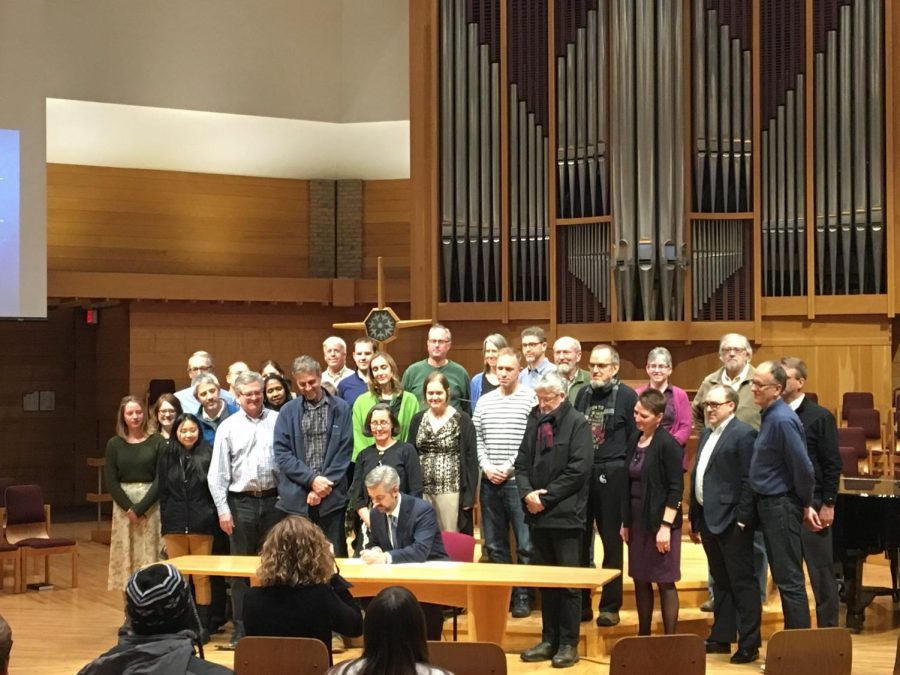
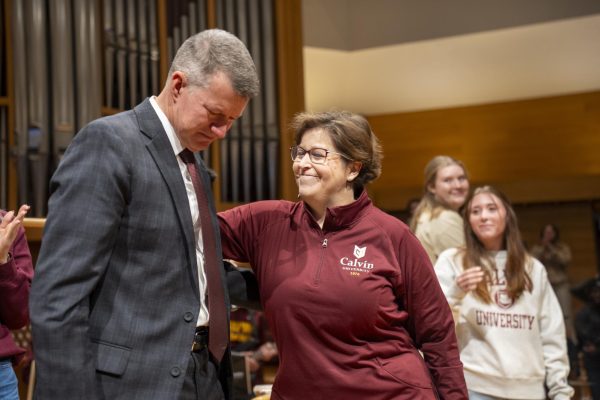
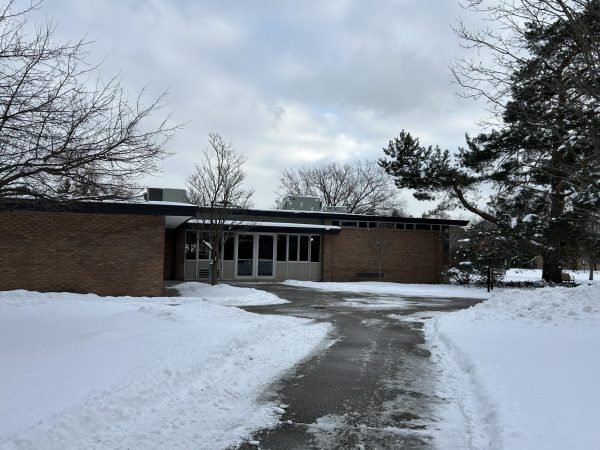
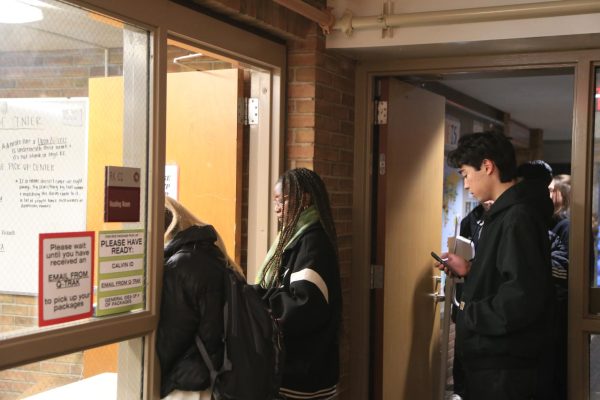

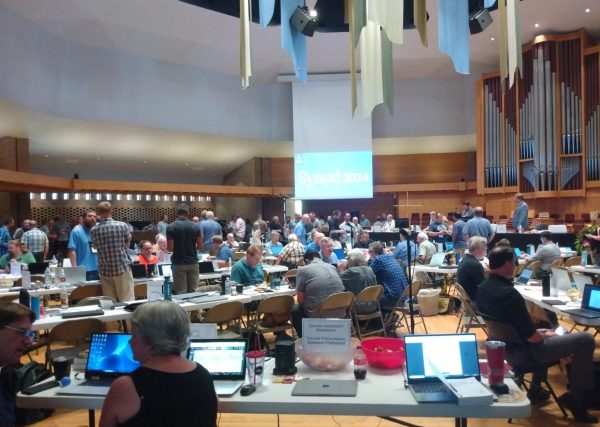



Jeff German • Sep 23, 2018 at 2:24 pm
Glad to see Calvin thoughtfully moving toward carbon neutral operations. Any comment on when/whether Calvin will begin to install chargers that would facilitate students or campus guests who would like to use electric vehicles but need a place to charge? Pay per use would be fine by me (as a Calvin student parent and alumni).
My son will need a vehicle within a year, and having on-campus charging could make a difference in what vehicle is a reasonable pick.
Yours,
Jeff German ’83